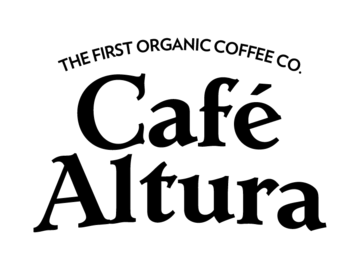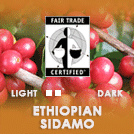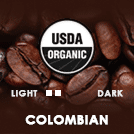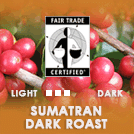What is “Single Source” or “Single Origin” Coffee?
The final taste of any coffee is the result of a process that can involve 10+ steps and changing of hands, across thousands of miles. At each step, a new technique or approach brings out different flavors in the bean. This is furthered when the coffee ends up as part of a “blend.” A coffee blend can mean a lot of different things, but it ultimately means that different types of beans, or beans from different locations (or both) have been mixed together to create the final product.
Single Source/Single Origin coffee is an indication of the provenance of the beans you are purchasing. It tells you that every bean you bought is of the same type, grown at the same location. Drinking different single source coffees can be a great way to better understand the flavor differences between regions and individual producers. Like with estate wines, single source/origin coffees aren’t inherently better than their blended counterparts, but they do offer unique experiences.
To understand what makes different single-source/origin coffees taste distinct from one another, it helps to remember the different environmental elements at play. Factors like elevation, shade, temperature, soil nutrients, precipitation amounts and many more all impact how beans mature, ripen and develop flavor.
By their nature, the flavor profiles of single source/origin coffee vary a lot from source to source but there are some general trends in flavor profiles that hold true. Let’s take a look at two common regions for single-origin coffees and their characteristics:
Ethiopian
Known as the birthplace of coffee, beans from Ethiopia hold a special place for coffee lovers. As the 7th largest producer of coffee beans, they hold an influential role worldwide as well. Coffees from Ethiopia are produced in three different regions – Sidama, Genika and Harrar – each with slightly varying tastes. Harrar can have a fruit-like acidity with notes of blackberry, a rich aroma and heavy body. Sidama and Genika are washed coffees that produces a more mild and floral aroma that maintains the fruit notes of Harrar beans. They’re brighter and more acidic with less body. Sidama in particular is grown at high elevations, above 1200 meters, which prolongs the time it takes for the coffee cherry to ripen. This means there’s more time for the coffee to develop sugars and other bright characteristics. Another unique component to Ethiopian coffee is that the trees grow naturally in many parts of the country making it one of only a few places throughout the world you can buy wild-grown coffee from.
Colombian
Colombian coffee is probably the kind that is most instantly recognizable to even the most casual coffee drinkers in North America. As the third largest producer of coffee in the world and the largest exporter of Arabica, you’ll find Colombian coffees nearly anywhere you go. Colombians have grown coffee since the late 1700’s, so the country’s system of growing and exporting is extremely efficient. In fact, coffee production and Columbia have become so synonymous to tourists that there is a theme park, the Colombian National Coffee Park, open since 1995. Most Colombian coffee is grown in the Piasa region, in an area called the coffee growing axis, which is further divided into four departments (Caldas, Quindío, Risaralda and Tolima). Colombia’s warm weather, heavy rain, and more moderate elevations means that their coffees experience a shorter growing season than those in Ethiopia. The coffees they produce are known for being well-balanced, mildly sweet and medium bodied with a moderate level of acidity. The beans grown here have undertones of chocolate, nuts and caramel, and as such they lend themselves well to both medium and dark roasts.
Our Recommended Organic Single Source Coffees



